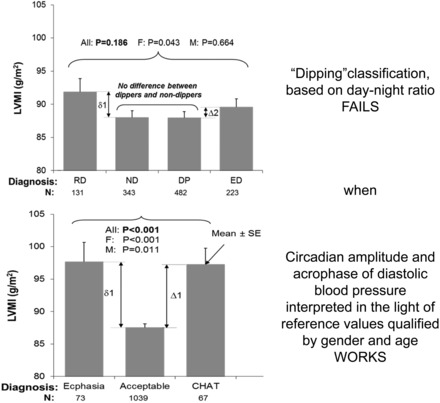Fig. 7.

Left ventricular mass index (LVMI), used as a surrogate outcome measure, available from all 1,179 participants, is compared among patients classified in terms of circadian characteristics assessed by cosinor (bottom) or in terms of dipping gauged by the day-to-night ratio (top). Comparison among groups within each classification is done by 1-way ANOVA overall (All) and separately for women (F) and men (M). LVMI values are greatly elevated when diastolic ecphasia or CHAT is present (corresponding to abnormal circadian patterns of DBP) vs. LVMI values of patients with and acceptable circadian amplitude and acrophase pair. Such a difference in LVMI is not seen when the day-to-night ratio is used for comparison: LVMI values of patients with a negative (reverse dippers; RD), too small (nondippers; ND), or too large (extreme dippers; ED) day-to-night ratio do not differ from LVMI values of patients with an acceptable day-to-night ratio (dippers; DP). Only a small difference is found for women (P = 0.043) but not for men (P = 0.664) or overall (P = 0.186).
